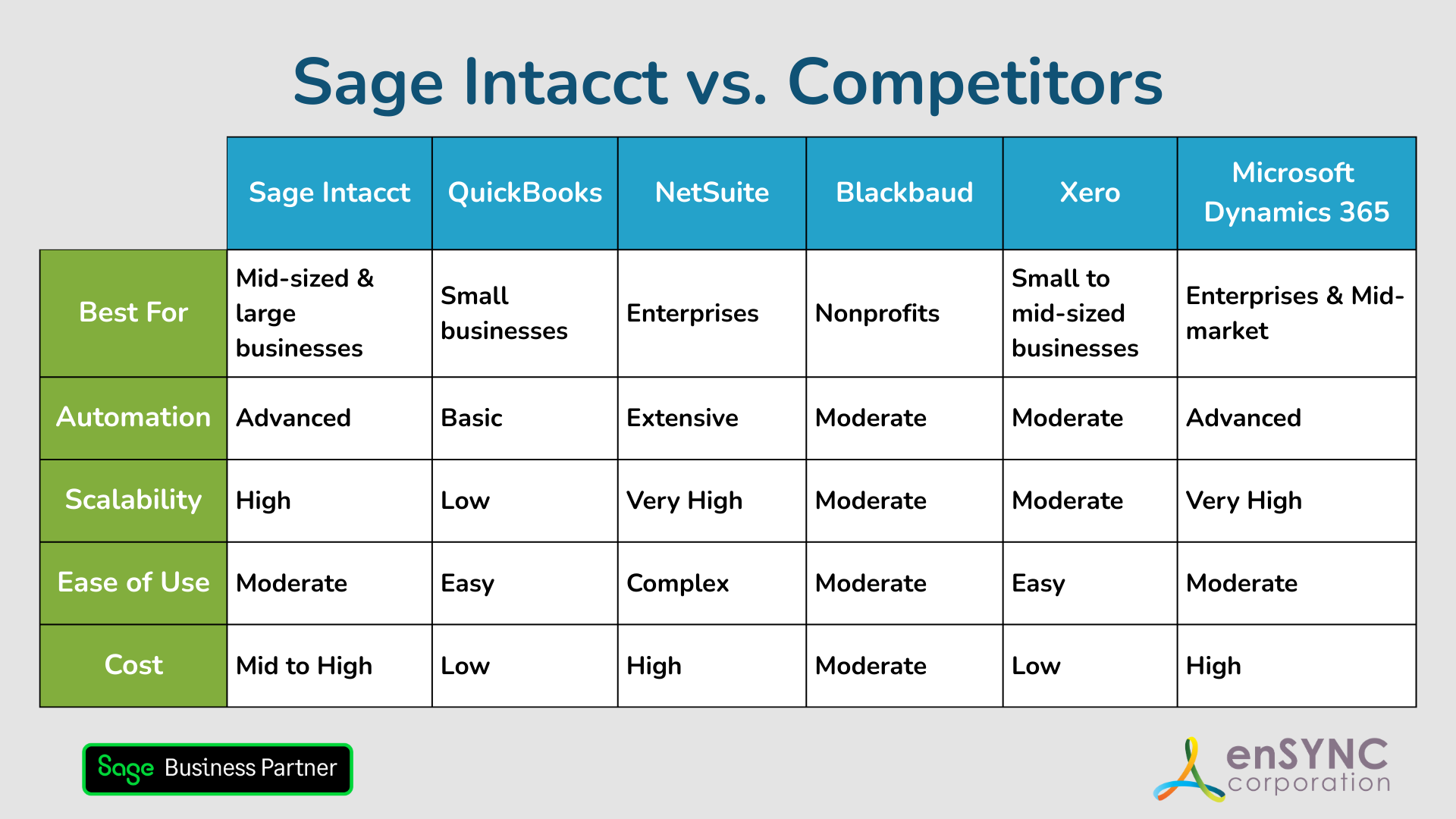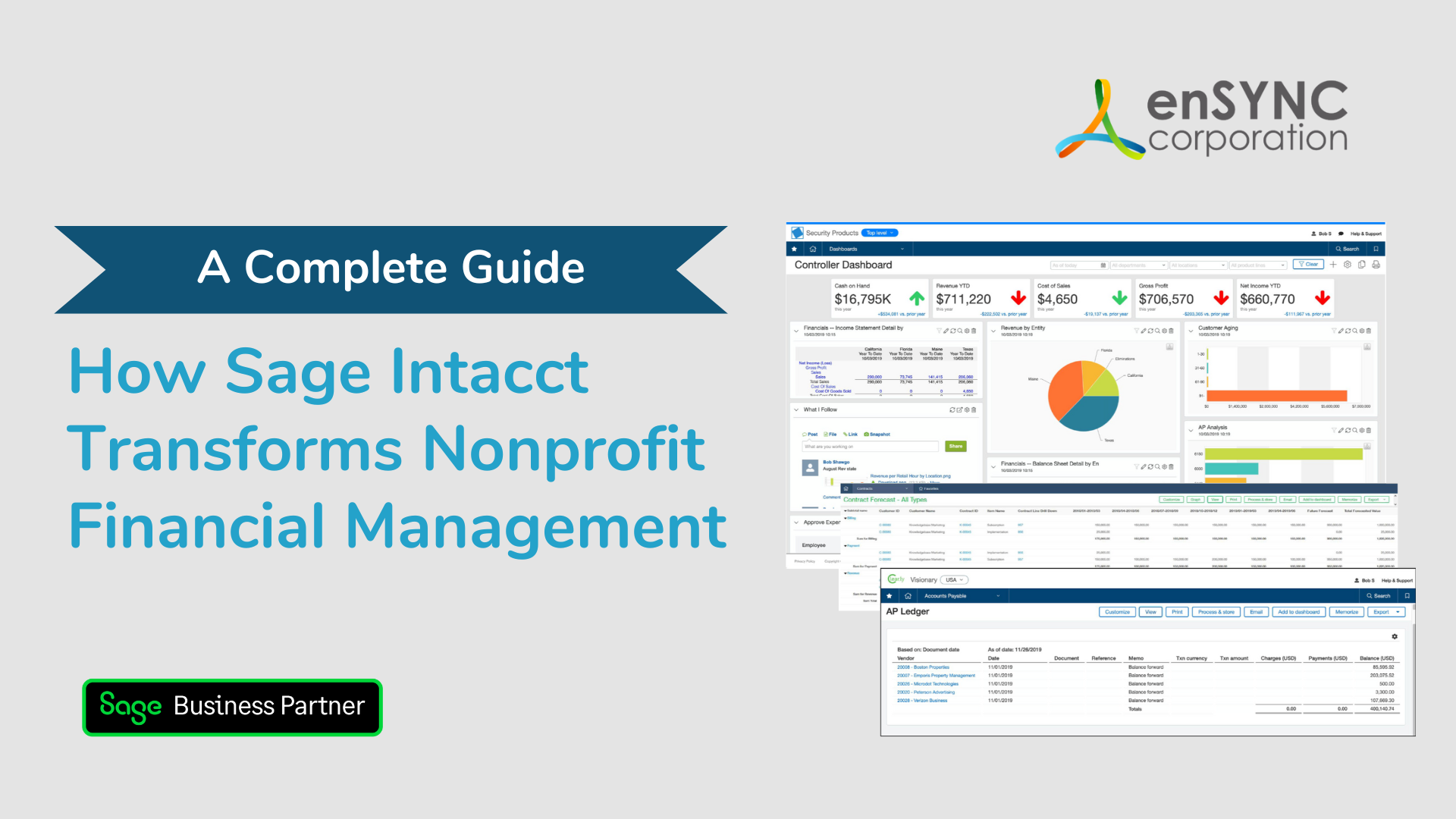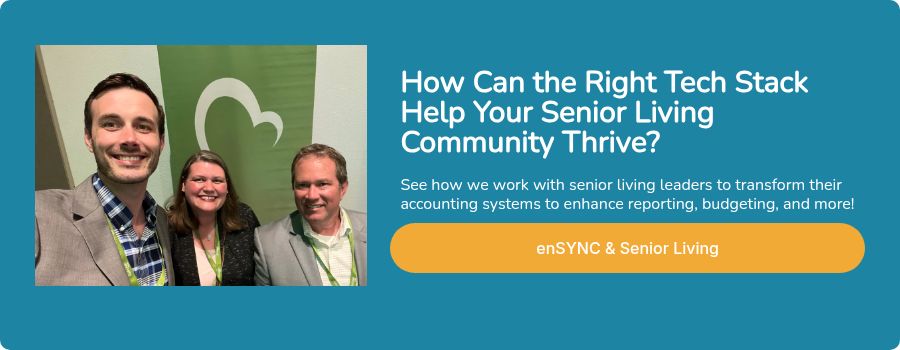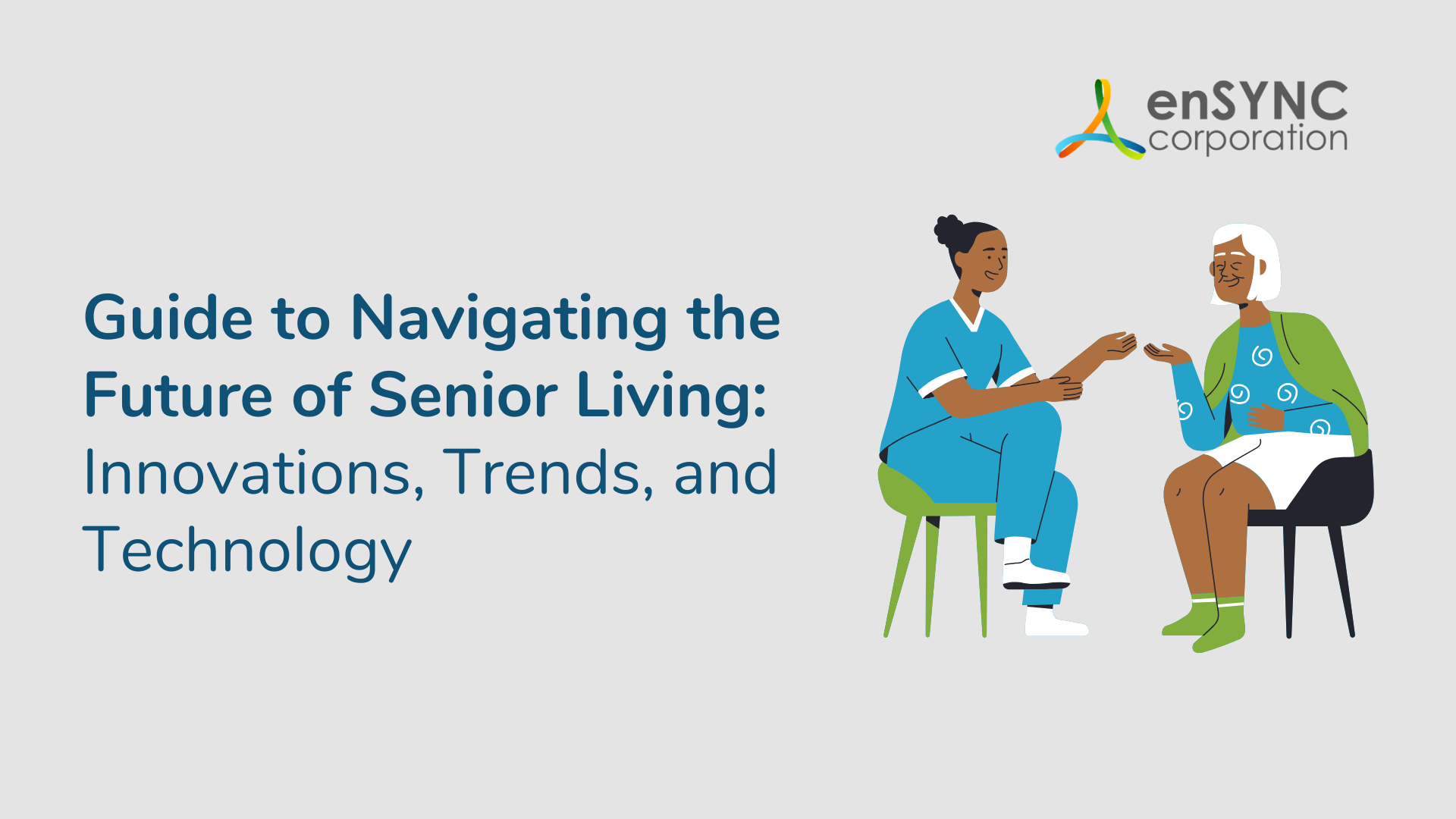Software solutions | Senior living
Guide to Navigating the Future of Senior Living: Innovations, Trends, and Technology
April 8, 2025
|
Navigating the Future of Senior Living Table of Contents
- Changing Landscape of Senior Living
- Technology Transforming Senior Living
- Nonprofit Senior Living: Market Analysis & Financial Trends
- Personalization & Resident Experience in Future Senior Living
- Future Challenges & Opportunities in Senior Living
- Learning and Building Community in the Senior Living Field
- Preparing for the Future of Senior Living
The Changing Landscape of Senior Living
Just like every other segment of the housing industry, the senior care industry has been in constant evolution since the COVID-19 pandemic. While there have been some bumps in the road, senior living trends indicate the industry has a bright future ahead. This transformation of senior care is driven by a multitude of factors, such as demographic shifts, technological advancements, and evolving resident expectations.
Let’s take a closer look at some of the drivers influencing the future of senior living:
Aging Population Growth
The global population is aging at an unprecedented rate. According to the U.S. Census Bureau, by 2050, nearly 22% of the U.S. population will be 65 and older. In 2050, the population aged 65 and over is projected to be 83.7 million, almost double its estimated population of 43.1 million in 2012. As this population grows, so will the demand for various senior living options.
Changing Senior Housing Preferences
When it comes to the types of senior living the aging population seeks, the demand for high-quality, affordable, and accessible services is increasing. Senior housing market data shows seniors are especially interested in:
- Independent Living Communities: Designed for active seniors who require minimal assistance but desire amenities such as social events, transportation, and housekeeping. Examples of in-demand amenities include customized wellness programs and diet-specific meal plans.
- Assisted Living Communities: Providing daily assistance while fostering independence, assisted living offers the perfect middle ground. According to data from the U.S. Centers for Disease Control and Prevention (CDC), most residents in residential care communities (which include assisted living communities and other residential care communities) were aged 85 or more years (53%), followed by 75–84 (31%), 65–74 (10%) and younger than 65 (6%). This sector is also experiencing rapid growth due to:
- A preference for home-like environments over institutional settings
- Advances in healthcare that allow seniors to stay in this type of housing longer
- Modern assisted living’s focus on holistic well-being and social engagement
- Memory Care Housing: According to the National Investment Center for Seniors Housing & Care (NIC), nearly a tenth of seniors over 65 are experiencing Alzheimer's disease or another type of dementia. Memory care offerings specialize in these conditions.
- Hybrid Models of Senior Care: A 2023 AARP report found that 75% of Americans over 50 want to live in their current home. This allows communities to offer hybrid models, combining in-home support with digital platforms for personalized care and connection.

For full data breakdown see AARP's A Focus On Housing report.
Beyond demographic trends and preferences, there are other factors influencing the senior housing industry, including:
- Staffing Challenges: The shortage of caregivers and nurses is a major hurdle. According to the National Center for Assisted Living’s 2022 State of the Assisted Living Industry report, 87% of assisted living communities were experiencing difficulty hiring staff. And that trend has continued since then.
- Senior Living Marketing Evolution: Digital marketing, SEO, and virtual tours are becoming essential tools for attracting new residents and standing out in the market.
- Regulatory & Compliance Requirements: Stricter regulations and the need for enhanced transparency are pushing senior living communities to find compliance solutions.
- Financial Pressures: Rising costs and occupancy fluctuations are among today’s top challenges.
- Technology Advancements: Innovations like AI-driven healthcare, remote monitoring, and smart home technology are improving safety, efficiency, and the overall resident experience.
Technology Transforming Senior Living
With multiple stakeholders and plenty of tasks to complete, managing a senior living community is complicated. Fortunately, technology and software specifically tailored to the unique needs of senior living can streamline operations, improve communications, and enhance the resident experience. From resident engagement software to assisted living community software, digital tools are crucial to keeping your community modern and ready to meet the needs of today’s seniors.
“Senior living can look to technology for ways to stay innovative,” says Janet Davidson, President of enSYNC. “From AI-driven healthcare solutions to smart home devices, senior living providers who want to thrive need to be at the forefront of the digital transformation. This includes backend technology that supports both accounting and operations. When financial tracking and management become more efficient, it opens the door for broader technology transformation across the organization.”
The Role of Software in Senior Living Management

1. Improved Care & Safety
Software can track residents’ health data, medications, and appointments to ensure timely care, as well as monitor health metrics to proactively flag any concerns.
2. Enhanced Communication & Coordination
Real-time updates allow better communication among staff, residents, and families. Additionally, centralized data ensures all departments are aligned on resident needs, and automated alerts help caregivers respond promptly to changes in a resident’s condition.
3. Personalized Resident Engagement
Essential for communities with residents who crave a personalized experience, software can give residents easier access to social engagements, activity tracking, and wellness programs, offering personalized plans based on a resident’s interests and capabilities. It can also help families stay involved with event reminders and promotions.
4. Regulatory Compliance & Risk Management
The right software can ensure you are adhering to all applicable healthcare regulations and standards, and verify that you have accrued digital records for audits and inspections. These tech measures reduce liability.
Digital Marketing & Senior Care Marketing Trends
Digital marketing also plays a crucial role in staying competitive now and in the future. Senior care providers can leverage technology, AI, and data-driven strategies to reach prospective residents and their families, building trust in an increasingly competitive landscape. To keep a competitive edge, here are some of the most innovative and effective senior living digital marketing ideas to add to your marketing toolbox:
- Artificial Intelligence (AI) in Senior Care & Marketing Automation
No industry is untouched by AI, including senior living. Smart uses of AI include AI-powered chatbots that provide instant responses and predictive analytics to enhance lead nurturing. Personalization through AI tailors your marketing messages, and offering virtual tours can give prospects immersive experiences. - Voice Search & SEO Optimization
With more seniors using voice assistants, optimizing for conversational, long-tail keywords is key to improving your visibility when prospects are searching for senior care communities. - Social Commerce & Influencer Marketing
Facebook remains dominant among older demographics. Take advantage of this by working with senior influencers and caregivers who can share experiences and drive engagement. - Content Management
Families helping their loved ones find the right community rely on Google, Yelp, and Facebook reviews. Blog posts, FAQs, and testimonials are other ways to provide valuable information. - Senior-Friendly Website & Digital Ads
Improve your web user experience by optimizing your website with accessible designs. Ensure all of the content on your site is easy to read with the right-sized text, font, and colors to improve user experience. Consider a pay-per-click ad campaign and ad retargeting to reach families actively searching for care.
Digital Transformation in Action: Bay County Medical Care Facility Advances Their Accounting Software

The Bay County Medical Care Facility (BCMCF) case study proves the dramatic difference that tech solutions can play in a community’s success.
BCMCF is a government-owned skilled nursing community that saw first-hand the benefits of implementing software. Faced with inefficiencies due to outsourced accounting, outdated systems, and reliance on Excel, BCMCF, which has 200 beds, implemented Sage Intacct, a nonprofit focused accounting software, for financial management.
As a result, BCMCF was able to:
- Automate purchasing processes, allowing departments to generate purchase orders seamlessly.
- Enhance budgeting, empowering supervisors with financial dashboards.
BCMCF saw significant improvements, such as:
- 50% increase in productivity, allowing staff to focus on financial analysis
- The monthly close cycle reduced from three weeks to two days
- 35% reduction in overtime costs and a 3-4% decrease in labor costs
- 70% improvement in reporting accuracy, with the investment paying for itself within five months
Nonprofit Senior Living: Market Analysis & Financial Trends
The nonprofit senior living sector plays a vital role in providing care and housing to the aging population and comes with its own unique considerations. Understanding current market dynamics and financial trends is essential for these organizations to navigate challenges and capitalize on opportunities.
Understanding Senior Housing Market Data
Before nonprofit senior living communities can take advantage of the opportunities before them, it’s important to first understand the data available. Senior housing market data is essential for identifying trends, investment opportunities, and the evolving needs of aging populations. Key factors include occupancy rates, which indicate demand, and rental growth, which reflects affordability and indicates that the market is expanding (or contracting). Paying attention to data about the demographic shifts noted above, such as increasing life expectancy, can indicate which care levels might drive more demand. It’s also important to keep an eye on regulatory changes, economic conditions, and consumer preferences so senior housing providers and investors can make informed decisions about future senior living developments.
Senior Living Community Software & Financial Management
Effective senior living financial management is crucial for nonprofit senior living communities to maintain sustainability and compliance.
- Cloud-based financial software streamlines budgeting, payroll, and expense tracking, improving transparency and efficiency.
- Automated billing systems reduce errors, ensuring timely revenue collection.
- Compliance tracking tools help meet regulatory requirements.
“Effective financial management is crucial for the sustainability and success of all senior care communities,” says Davidson. ”By integrating data-driven financial solutions, nonprofit communities can optimize resources, reduce costs, and focus on what they do best: delivering high-quality senior care services.”
Personalization & Resident Experience in Future Senior Living
As senior care trends evolve, communities that take a personalized approach are standing out — and this will only continue. Future senior living trends will prioritize individualized care, senior preferences, and technology-driven solutions to enhance quality of life. Here’s a closer look at some of the trends you can expect to see more of:
Tailored Care Plans & Wellness Programs
Personalized senior care focuses on holistic wellness, considering medical needs, dietary preferences, and lifestyle choices. This may sound time-consuming, but communities are increasingly using AI and predictive analytics to create custom care plans that adapt to residents’ evolving health needs. According to the NIC, demand for wellness-focused senior care is rising as older adults seek communities that help them proactively support their own health.
Technology-Driven Personalization
From wearable health monitors to smart home technology, digital tools give residents greater environmental control. Voice-activated assistants, fall-detection sensors, and AI-powered companionship devices help seniors stay engaged and safe. Additionally, interactive apps allow residents to choose meal plans, participate in virtual social events, and schedule activities based on personal interests.
Customized Social & Recreational Activities
Future senior living communities will go beyond one-size-fits-all programming. Those personalized preferences will extend to events and activities, allowing seniors to select programming that matches their interests and abilities. Research published in the Journal of Medical Internet Research shows that personalized social programs reduce isolation and improve mental well-being.
By embracing these senior care trends, communities can foster a more engaging, supportive, and fulfilling environment for aging adults, ensuring that the next generation of residents enjoys the greater autonomy and enriched living experiences they desire.
Future Challenges & Opportunities in Senior Living
The senior living industry is in a transformational period, facing a blend of challenges and opportunities that will shape its trajectory in the coming years. Understanding the future of assisted living, anticipating future trends in senior care, and addressing staffing challenges in senior care are crucial for stakeholders aiming to navigate this evolving landscape effectively.
Evolving Demographics and Demand
As the baby boomer generation ages, the need for quality senior housing will continue to increase. And this need will become apparent long before 2050. As reported in the Wall Street Journal, projections indicate that the number of U.S. citizens aged 80 and older will increase by more than 4 million to 18.8 million by 2030, suggesting a rising need for a wide variety of senior housing options.
While the demand for senior living communities is expected to grow, the industry must adapt to the preferences of a new generation of seniors, namely the desire for personalized options and access to the latest technology integrated into their living environments.
Staffing Challenges in Senior Care
Workforce-related issues will likely continue to be challenging — from staffing shortages to pressure for higher wages. Senior housing communities must find the latest innovative solutions to attract and retain the qualified caregivers that residents and families seek.
Senior housing providers should consider a few tactics to remain competitive with today’s workforce:
- Competitive Compensation: Offer employee wages that reflect the nature of caregiving roles is essential and conveys that you understand the demands of the job.
- Professional Development: Today’s job seekers are looking for a clear career path. Providing advancement opportunities can enhance job satisfaction and retention.
- Positive Work Environment: Happy people want to work with happy people. Fostering a supportive workplace culture can improve employee morale and reduce turnover.
The Promise (and Challenge) of Tech
Integrating technology into senior care is both a challenge and an opportunity. Adopting digital tools and automation can streamline operations and enhance financial sustainability. The challenge here is in the required investment and training. Despite the barriers, organizations should still make technology a priority, as it can lead to:
- Improved Care Coordination: Thanks to digital health records, senior living communities can have better communication among healthcare providers.
- Enhanced Resident Engagement: Interactive platforms can keep residents and their families connected and engaged.
- Operational Efficiency: Tools like AI-driven forecasting and administrative task automation can reduce errors and free up staff for direct care activities — and help with the staffing shortage.
“We see technology not as a future goal but as a present necessity in senior care,” says Davidson. “The staffing challenges our industry faces are not going away overnight — but with the right digital infrastructure, communities can do more with the teams they already have. These tools boost efficiency and create a better experience for residents and staff alike.”
Learning and Building Community in the Senior Living Field
Seniors looking for the right senior housing option are looking for more than a place to live — they are looking for a safe place to call home. To deliver on this, the senior living sector must prioritize continuous learning and community building. This could be in person at conferences or through valuable senior living-related publications.
The Role of Conferences in Senior Care Thought Leadership
Conferences serve as platforms for knowledge exchange, networking, and innovation in senior care. The LeadingAge Annual Meeting, for instance, attracts thousands of aging services professionals globally, offering sessions on best practices, policy updates, and emerging trends. desiSimilarly, the NIC Spring Conference focuses on providing the latest data and trends, bringing together leaders in senior housing, skilled nursing, healthcare, and support services.
Events like these gatherings offer invaluable:
- Networking: Connect with other professionals to share experiences and solutions.
- Education: Gain insights into the latest research, ideas, and innovations
- Advocacy: Align with others in the industry on policy priorities and be a part of advancing the industry
The Impact of Industry Publications on Senior Living Trends
Industry publications like Senior Housing News and McKnight’s Senior Living are instrumental in highlighting trends, challenges, and success stories within the senior living sector. They offer:
- Timely News: Keeping professionals informed about regulatory changes, market dynamics, and technological advancements.
- Case Studies: Showcasing innovative approaches and best practices.
- Expert Opinions: Providing analysis and commentary from industry leaders.
These publications are valuable resources for staying abreast of developments and help guide leadership’s strategic decisions.
Preparing for the Future of Senior Living
The future of senior living is poised for transformation, influenced by demographic shifts, technological advancements, and evolving consumer expectations. While challenges like staffing shortages and operational costs persist, the future is filled with opportunities for those senior living leaders ready to innovate and adapt.
Key Takeaways
- Embrace Technology: Digital solutions can enhance care delivery and operational efficiency.
- Focus on Workforce Development: Implementing strategies to attract, retain, and develop staff is crucial for sustainability.
- Engage in Continuous Learning: Participating in conferences and staying informed through industry publications can provide valuable insights and foster collaboration with your senior living peers.
By addressing these areas proactively, senior living providers can position themselves to meet the evolving needs of the aging population and ensure a future full of benefits — both for the organization and its residents.

Meet Josh Kozinski, the Director of Business Development at enSYNC. With expertise in Sage Intacct, iMIS, and supporting technologies, Josh's mission is to simplify complex processes by transforming rogue spreadsheets and databases into streamlined, automated solutions. His dedication to delivering strategic solutions aligns perfectly with enSYNC's commitment to efficient and innovative nonprofit management. Josh is not just a leader at enSYNC; he's actively involved in prominent industry organizations. By staying connected with these networks, Josh remains at the forefront of industry trends and best practices. In addition to his professional pursuits, Josh serves on the Board of Directors for the Dallas Fort Worth Association Executives, giving back to the industry he's passionate about. Away from the office, Josh is an athlete at heart. He pursued his college education at Central Michigan, where he played basketball. However, what Josh values most is his relationships with his family and his faith in God. Josh is always open to discussions, whether you're seeking innovative solutions for nonprofit management, exploring industry trends, or simply connecting with like-minded professionals.
Recent Posts

Sage Intacct vs. Competitors: Finding the Best Accounting Solution for Your Nonprofit
Choosing the right accounting software is a critical step for any organization — and a deeply personal one, too. How to choose the accounting...

How Sage Intacct Transforms Nonprofit Financial Management: A Complete Guide
Staying on top of financial management is crucial for all businesses, especially nonprofits. Nonprofits often have limited resources and handle...
Enjoying our blog?
At enSYNC, we want to empower associations and nonprofits to make well-educated decisions. If you want our industry knowledge (and other free guides) sent directly to your inbox, fill out the form below.


